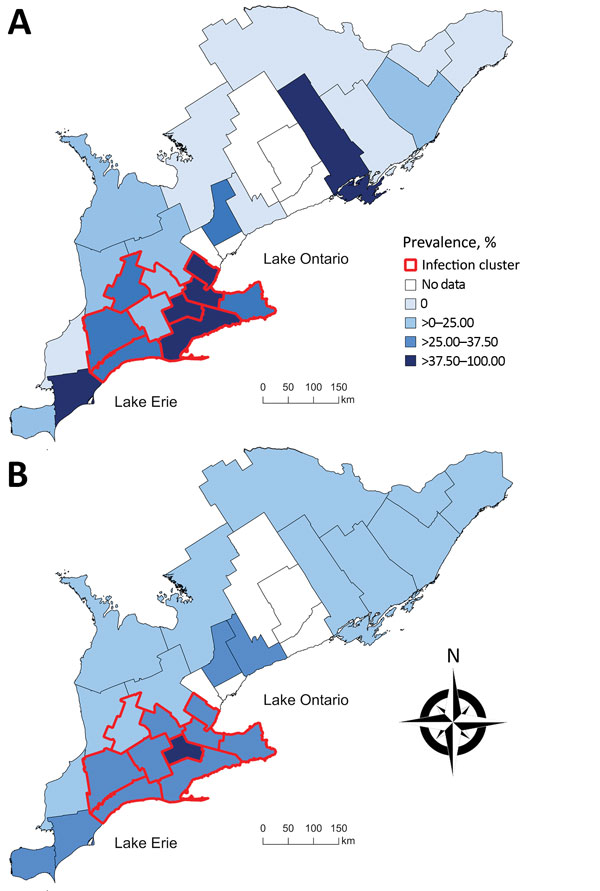Volume 25, Number 2—February 2019
Research
Echinococcus multilocularis Infection, Southern Ontario, Canada
Figure 2

Figure 2. Choropleth maps of A) the unadjusted prevalence and B) the empirical Bayesian-smoothed prevalence of Echinococcus multilocularis tapeworms in coyotes and foxes across 25 southern Ontario public health units, 2015–2017. Unadjusted and smoothed prevalence estimates are categorized by quartiles on the basis of unadjusted prevalence estimates. Red boundaries indicate a significant spatial cluster of high prevalence identified by using a spatial scan test with a Bernoulli model on the basis of data georeferenced to their public health units (relative risk 2.26; p = 0.002).
Page created: January 18, 2019
Page updated: January 18, 2019
Page reviewed: January 18, 2019
The conclusions, findings, and opinions expressed by authors contributing to this journal do not necessarily reflect the official position of the U.S. Department of Health and Human Services, the Public Health Service, the Centers for Disease Control and Prevention, or the authors' affiliated institutions. Use of trade names is for identification only and does not imply endorsement by any of the groups named above.